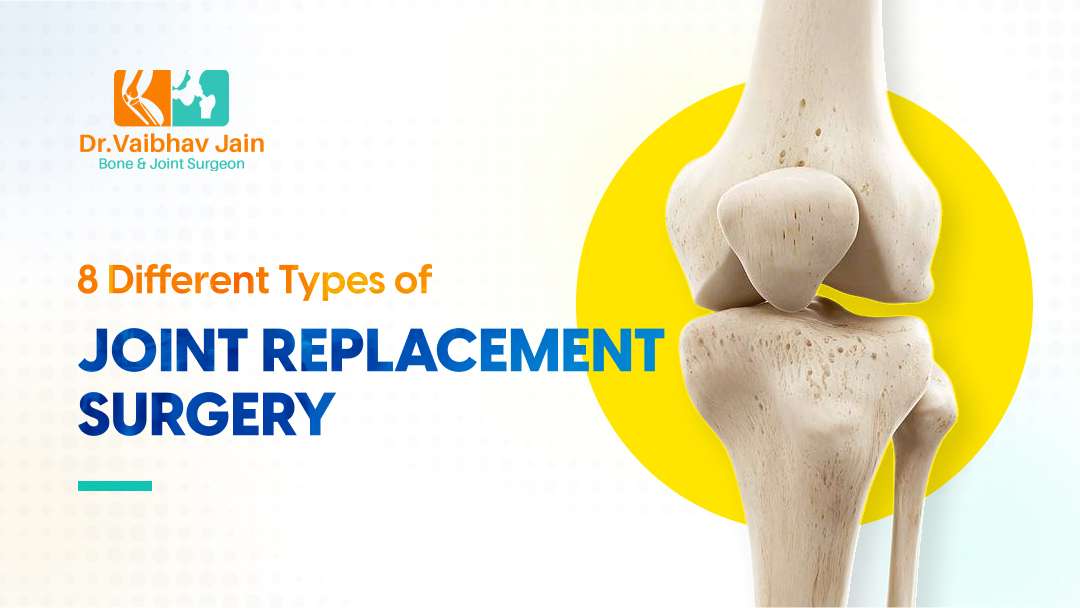Joint or sometimes called arthritis is a degenerative joint disease. It is a painful condition that is common in people over the age of 65. Joint replacement surgery is a surgical procedure that uses Types of Joint Replacement Surgery.
Joint replacement surgery can either be done for joints that have been damaged by arthritis or for severe bone injuries. There are different Types of Joint Replacement Surgery and this article will discuss some of the most important ones.
1. Total Joint Replacement Surgery
Total joint replacement (TJR) surgery is a standard and highly effective procedure for treating end-stage joint disease. It is a type of arthroplasty involving removing part or all of a damaged joint and replacing it with an artificial implant. This type of joint replacement surgery can improve mobility and reduce or eliminate pain.
Most patients who undergo total joint replacement surgery experience significant pain relief. Additionally, patients often experience improved mobility and a better quality of life. Recovery time will vary depending on the Types of Joint Replacement Surgery performed and the patient’s overall health. Generally, it may take up to six months for a patient to return to normal activities after the surgery.
| Benefit | What It Means |
|---|---|
| Less Pain | The surgery can make the joint pain go away. |
| Easier Movement | You can move your joint more easily after the surgery. |
| Better Daily Life | You can do things you enjoy more comfortably. |
| Normal Function | Your joint works like it should after the surgery. |
| Lasts a Long Time | The results of the surgery can last many years. |
| Stronger Muscles | The muscles around the joint get stronger. |
| Less Stiffness | The joint feels less stiff, so you move more freely. |
2. Hip Replacement
Hip replacement surgery is one of the most common Joint arthroscopy. It is a surgical procedure in which an orthopedic surgeon removes damaged or diseased portions of the hip joint and replaces them with a prosthetic implant. Hip replacement surgeries are typically recommended for patients who suffer from chronic hip pain and decreased range of motion due to arthritis, trauma, or hip deformities.
When an orthopedic surgeon performs a hip replacement surgery, they can perform a total or a half hip replacement. A total hip replacement involves replacing both the hip joint’s acetabulum and the femoral head. The acetabulum is the hip joint socket, and the femoral head is the ball at the top of the thighbone that fits into the socket. During a total hip replacement, the joint replacement surgeon may replace both components of the hip joint or just the femoral head.
| Benefit | What It Means |
|---|---|
| Less Pain | The surgery helps reduce or remove hip pain. |
| Better Movement | You can move your hip more easily after the surgery. |
| Improved Walking | Walking becomes easier and more comfortable. |
| More Activity | You can do more activities you enjoy without pain. |
| Long-Lasting Results | The improvements last for many years. |
| Fewer Stiffness Issues | Your hip feels less stiff and moves better. |
| Stronger Hip | Your hip joint becomes stronger after the surgery. |
3. Knee Replacement
When the knee joint has been damaged or worn down due to degenerative conditions such as osteoarthritis, rheumatoid arthritis, or post-traumatic arthritis, a knee replacement can help reduce pain and restore the knee’s function. The procedure involves replacing the damaged or worn-out knee joint with a new, artificial joint.
Knee replacement surgery is a major undertaking and should not be taken lightly. It’s essential to consult your doctor about the risks and benefits of the procedure and to be sure you understand the surgery’s implications. With the right team of healthcare professionals and with good patient care, knee replacement can lead to a successful outcome and improved quality of life.
4. Shoulder Replacement
Shoulder Replacement is a type of joint replacement surgery that involves replacing a damaged or worn-out shoulder joint with an artificial one. It is becoming increasingly popular for those who suffer from severe shoulder pain, stiffness, and limited range of motion. The two types of shoulder replacement surgeries are the deltopectoral and trans-deltoid approaches.
The deltopectoral approach is a type of shoulder replacement surgery that is designed to save the deltoid (shoulder) muscle and preserve function. This procedure does not involve cutting through the shoulder joint’s rotator cuff and instead is performed by accessing the shoulder joint through an incision made in the skin and muscle of the front of the shoulder. The prosthetic shoulder joint is then inserted and secured with sutures.
Reverse Total Shoulder Replacement is an option for those who suffer from severe shoulder pain and limited movement. This type of shoulder replacement surgery involves replacing the shoulder joint’s ball and socket with prosthetic components. This procedure can restore movement and allow for more natural shoulder function.
5. Elbow Replacement
Regarding joint replacement surgery, elbow replacement can be one of the more complex procedures. This is because the elbow joint has many intricate parts that work together to control the movement of the forearm. Pain can be the main reason why people opt for elbow replacement surgery instead of alternatives such as medication or less invasive surgeries.
Elbow replacement may involve either a total or partial replacement, depending on the area of the damage. If only one area is affected, surgeons can go in and replace that particular area. However, if the entire elbow joint is damaged, the ends of the bones that come together are removed and replaced with an artificial joint.
6. Wrist Joint Replacement
For someone with severe arthritis, wrist joint replacement surgery can be an excellent option when other pain relief methods have not worked. This type of joint replacement surgery is more complex than other joint replacement surgeries and requires a skilled joint replacement surgeon.
The process of wrist joint replacement surgery starts with the orthopedic surgeon removing the affected parts of the wrist joint and preparing the surrounding area to implant the artificial joint. The artificial joint is made of metal, plastic and ceramic materials. It is designed to last for the patient’s lifetime, providing a durable and long-lasting solution for the painful condition.
7. Ankle Replacement
Joint replacements have been around for many years, but recently, the technology has been advanced to allow for ankle replacements. An ankle replacement is a type of joint replacement surgery that replaces a damaged ankle joint with an artificial implant.
The ankle joint is where the shinbone (tibia) rests on top of the talus bone in your foot. When the cartilage on the surface of the bones wears away, it can cause pain, inflammation, and even swelling of this joint. When the pain becomes too severe, surgery is an option to reduce it.
During an ankle replacement surgery, the injured joint is removed and replaced with an artificial implant. This implant is designed to provide increased stability and improved ankle joint movement while promoting a more natural range of motion.
8. Finger Replacement
Finger replacement surgery is a type of joint replacement surgery that involves the removal of a damaged joint and replacement with an artificial one. This procedure can help and restore joint stability, mobility and reduce pain.
Finger replacement surgery is typically an outpatient procedure. The recovery time usually takes around four to six weeks. During recovery, it is important to follow the doctor’s instructions to ensure the best possible outcome. This includes avoiding any strenuous activities and refraining from using the hand until full recovery is achieved.
Conclusion
Joint replacement surgery is an effective and viable option for severe joint damage, arthritis, or bone injuries. With a wide range of options available, it is essential to consult a qualified medical professional to determine the best action for your particular needs. By understanding the different types of joint replacement surgeries available, you can decide on the best course of action for improved quality of life.
If you require a joint replacement surgeon, look no further than Dr. Vaibhav Jain. He is highly experienced, dedicated to patient care, and committed to staying up to date on the latest advancements in joint replacement surgery. Contact him today to schedule a consultation and discuss your treatment options.





